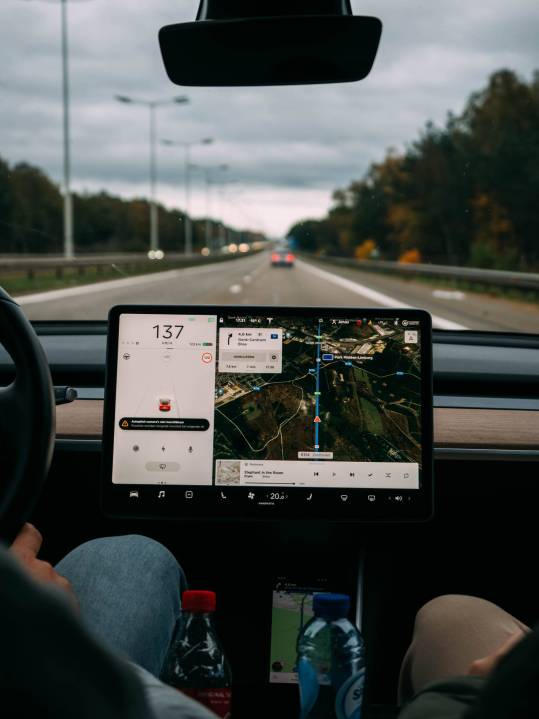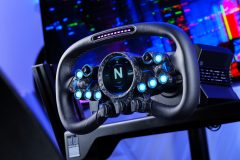A fatal crash involving a 2018 Tesla Model 3 in California has prompted the NHTSA to launch a new special crash investigation. Experts believe that high-tech safety features contributed to the crash. The last special crash investigation into a Tesla vehicle accident was in March, so this one follows on the heels of several others.
Twenty people have died in crashes where advanced driver assistance systems like Autopilot were suspected, leading the NHTSA to open more than three dozen special crash investigations involving Tesla vehicles since 2016. A fatal California crash involving a Tesla Model S prompted the National Highway Traffic Safety Administration to launch a new special investigation in February. There was speculation that a high-tech driver assistance system had been used.
Several fatal accidents have involved Teslas, and many of them involved assisted driving technology. A driver using Autopilot on his Tesla Model S crashed into a semi-truck in Florida in May 2016, killing the driver instantly. A fatal accident occurred in March 2018 in California involving an Autopilot-enabled Tesla Model X.
The National Highway Traffic Safety Administration opens more than a hundred special crash investigations each year into new technologies and other potential auto safety issues, some of which have led to the creation of regulations for things like airbags. The federal agency’s defect investigation into 830,000 Tesla vehicles with driver assistance system Autopilot and crashes with parked emergency vehicles like fire trucks was upgraded to an engineering analysis in June 2021. The government agency couldn’t demand a recall until that happened.
Some experts have criticized Tesla’s Autopilot system, saying that the company hasn’t done enough to make sure drivers know its limitations. The company insists that its system is meant to aid drivers, not replace them.
In the wake of fatal accidents involving Tesla vehicles, the company has revised its Autopilot system in a number of ways. The company released an update in 2016 that mandated drivers’ hands must remain on the wheel at all times. A new 2019 Tesla feature, “Navigate on Autopilot,” allows the car to switch lanes and exit highways without any input from the driver.
In conclusion, the NHTSA’s probe into the fatal California Tesla crash is the latest in a series of such probes into accidents involving Tesla vehicles. Although the company has made improvements to the Autopilot system as a result of these mishaps, concerns remain about the system’s suitability for use on public roads.
For the time being, Tesla owners should use caution when operating their vehicles with the Autopilot system engaged. Keep your hands on the wheel at all times, and be ready to take control of the vehicle if necessary. The National Highway Traffic Safety Administration (NHTSA) is currently investigating the fatal crash and will likely release additional details about the accident’s cause and potential preventative measures at a later date.
First reported on Economic Times
Frequently Asked Questions
Q. What has prompted the NHTSA to launch a special crash investigation into a fatal Tesla Model 3 crash in California?
The National Highway Traffic Safety Administration (NHTSA) has initiated a special crash investigation into a fatal crash involving a 2018 Tesla Model 3 in California due to the concerns surrounding high-tech safety features in the vehicle. The crash has raised questions about the role of Tesla’s Autopilot system, an advanced driver assistance system, in the incident. Given the potential implications of such technology in automotive safety, the NHTSA has taken the initiative to thoroughly examine the circumstances and determine any contributing factors to the tragic accident.
Q. How many special crash investigations involving Tesla vehicles have been conducted by the NHTSA?
The NHTSA has undertaken more than three dozen special crash investigations involving Tesla vehicles since 2016, signifying a considerable level of interest and scrutiny on the safety performance and reliability of Tesla’s vehicles. These investigations were prompted by concerns about advanced driver assistance systems, particularly Tesla’s Autopilot feature, which has been linked to several fatal accidents.
Q. What were some of the fatal accidents involving Tesla vehicles and assisted driving technology?
Several fatal accidents involving Tesla vehicles have been associated with the use of assisted driving technology, most notably the Autopilot feature. For example, a Tesla Model S using Autopilot crashed into a semi-truck in Florida in May 2016, resulting in the driver’s death. Another fatal accident occurred in March 2018 in California, involving an Autopilot-enabled Tesla Model X. Furthermore, a recent tragic incident in Florida involving a Tesla Model 3 and a semi-truck has raised further concerns about the safety of the Autopilot system.
Q. What actions has Tesla taken to address concerns about its Autopilot system?
In response to concerns and accidents related to its Autopilot system, Tesla has taken measures to enhance safety and user awareness. In 2016, the company updated the Autopilot system to include a mandatory requirement for drivers to keep their hands on the steering wheel at all times while using the feature. This update aimed to ensure that drivers remain actively engaged and ready to take control of the vehicle if necessary. Additionally, Tesla introduced the “Navigate on Autopilot” feature in 2019, enabling the vehicle to autonomously switch lanes and exit highways, but still requiring driver supervision.
Q. What are some concerns and criticisms about Tesla’s Autopilot system?
Despite Tesla’s efforts to promote the Autopilot system as a driver assistance tool, there have been concerns and criticisms from experts and safety advocates. One major criticism is that the company may not have adequately communicated the system’s limitations to users. As a result, some drivers might place excessive trust in the system, assuming it can handle all driving tasks, which could lead to potentially dangerous situations. Experts argue that clearer communication and user education are essential to ensure responsible usage of such advanced driver assistance systems.
Q. What cautionary advice is given to Tesla owners using Autopilot?
Tesla owners using the Autopilot system are advised to exercise caution and adhere to the company’s guidelines for its use. Drivers should keep their hands on the steering wheel at all times, maintain active supervision, and be prepared to take control of the vehicle whenever necessary. It is essential to remember that while Autopilot can assist with certain driving tasks, it is not a fully autonomous system and requires human oversight and intervention.
Q. What can be expected from the ongoing NHTSA investigation into the fatal California Tesla crash?
The NHTSA’s ongoing investigation into the fatal California Tesla crash will likely involve a comprehensive examination of various factors that may have contributed to the accident. This includes analyzing the vehicle’s data logs, conducting crash reconstruction, and assessing the role of the Autopilot system in the incident. The investigation aims to identify any safety issues or deficiencies in the system and, if necessary, recommend corrective actions or improvements to prevent similar accidents in the future. The findings of the investigation are likely to be shared with the public and could potentially impact the development and regulations of advanced driver assistance technologies across the automotive industry.
Featured Image Credit: Unsplash


















